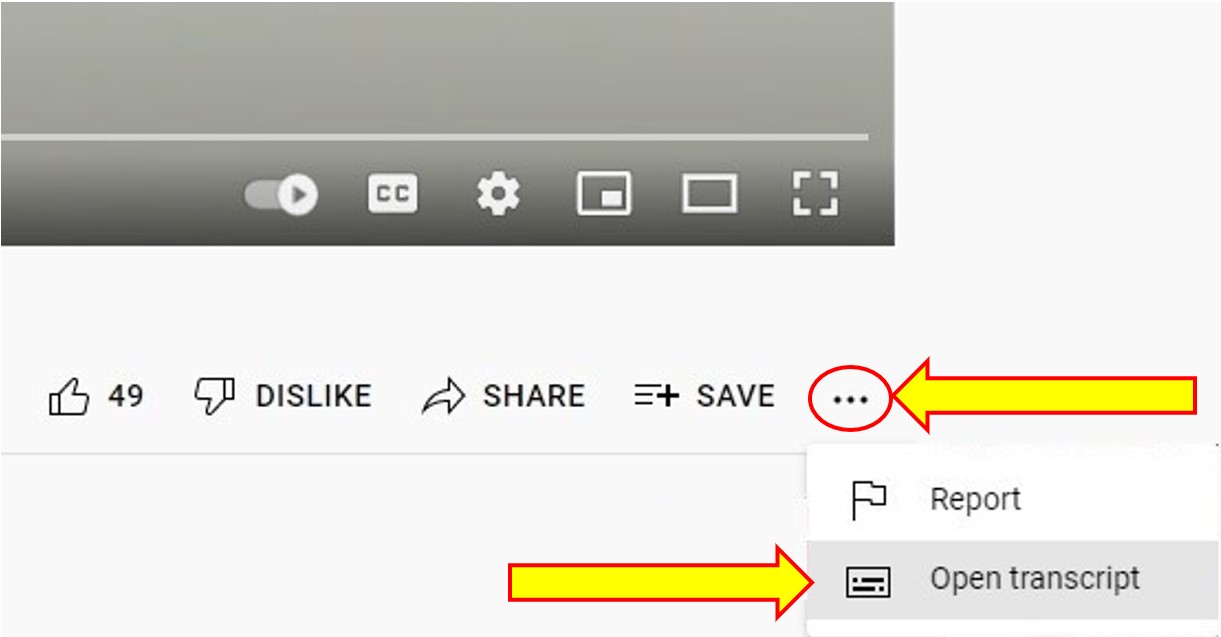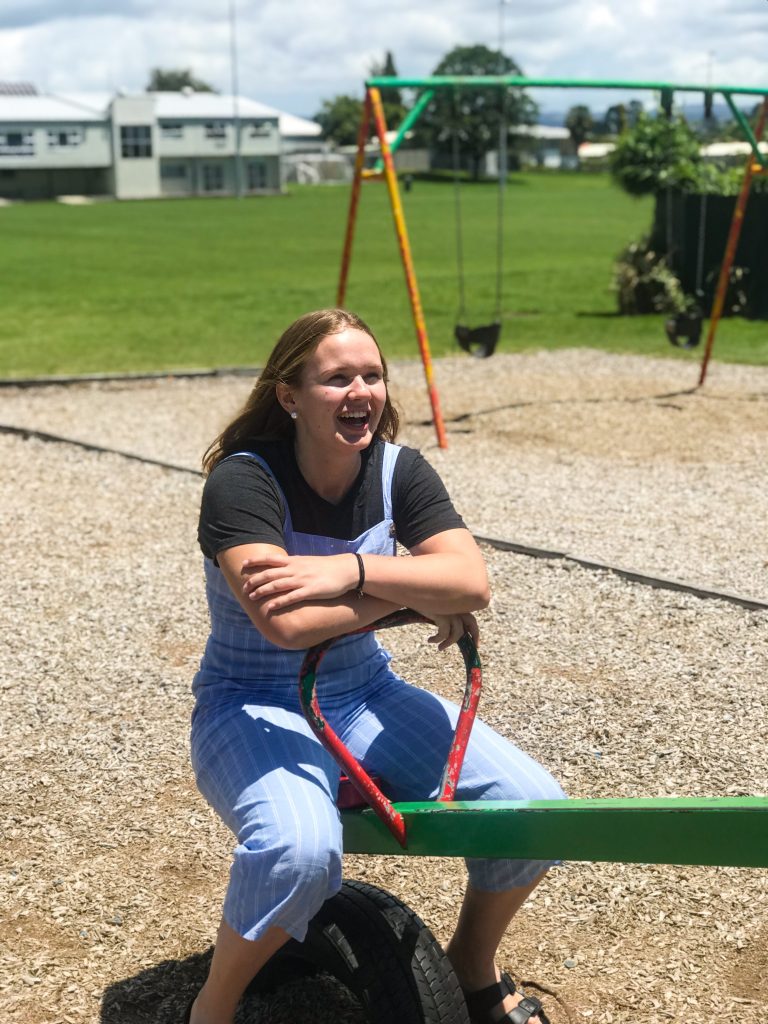2.2 Motivational Interviewing
“Motivational Interviewing is by definition a conversation about change, and focusing involves establishing the direction of travel.”
Miller, William R.; Rollnick, Stephen. Motivational Interviewing, Third Edition (Applications of Motivational Interviewing) . Guilford Publications. Kindle Edition.

What is Motivational Interviewing?
Motivational Interviewing (MI) is an effective way of talking with People around change. It can be applied in a large variety of settings. This makes it an effective counselling method that helps people resolve ambivalent feelings and insecurities to be able to find the necessary motivation to make changes in their behaviour and lives.
Depending on the environment MI is used in, the recipients might be referred to as clients, patients, offenders, residents, or consumers etc. As well as those who are providing MI might be counsellors, doctors, coaches, nurses, practitioners, clinicians or educators.
Introduction to Motivational Interviewing
Introduction to Motivational Interviewing – Bill Matulich. In this slide presentation I talk about the basic concepts of Motivational Interviewing (MI). After a brief definition, topics include: the Spirit of MI, The four basic OARS skills, and the “processes” of MI(1)
Transcript
To Access the Video Transcript:
1. Click on “YouTube” on the bottom-right of the video. This will take you directly to the YouTube video.
2. Click on the More Actions icon (represented by three horizontal dots)
3. Click on “Open Transcript”

Spirit of Motivational Interviewing
The Spirit of Motivational Interviewing is an important component of Motivational Interviewing. There are 2 very important pieces that come into play with Motivational Interviewing.
These are:
- tools, techniques, strategies
- Spirit
The Spirit guides Motivational Interviewing without this it is like riding a bike without handle bars. It is an important piece to allow us to assist our clients. The spirit of MI is based on three key elements: collaboration between the therapist and the client; evoking or drawing out the client’s ideas about change; and emphasizing the autonomy of the client.
The Spirit of MI is like the roots of a tree – both supporting and nourishing the practice of MI. (Bill Matullich)

The spirit of MI is teamwork. The Clinician and the client work together to create a plan that works well for the client. The client is the pilot and the clinician is the co-pilot working together.
Let’s Watch this video on: Spirit of Motivational Interviewing
Spirit of Motivational Interviewing by Bill Matulich. This video is about the Spirit of Motivational Interviewing. Spirit is the guide to the ethical practice of using the powerful strategies and techniques of Motivational Interviewing. (2)
Transcript
To Access the Video Transcript:
1. Click on “YouTube” on the bottom-right of the video. This will take you directly to the YouTube video.
2. Click on the More Actions icon (represented by three horizontal dots)
3. Click on “Open Transcript”

The 4 key pieces of the spirit of MI include:
- Partnership – working as a team, both bring experience and knowledge to the partnership.
- Acceptance – Absolute worth, Accurate Empathy, Autonomy Support & Affirmation
- Compassion – is putting the clients’ needs first, it is crucial to the relationship
- Evocation – the clients’ experience, knowledge, strengths
The Spirit of MI is applied differently by different professionals, but it is a crucial component for Motivational Interviewing to be successful.
Method of Motivational Interviewing
“People are generally better persuaded by the reasons which they have themselves discovered than by those which have come into the mind of others.”
—BLAISE PASCAL
Miller, William R.; Rollnick, Stephen. Motivational Interviewing, Third Edition (Applications of Motivational Interviewing) . Guilford Publications. Kindle Edition.
In Motivational Interviewing there are 4 processes that are incredibly important: engaging, focusing, evoking and planning. Engaging is how we connect with the client and create a positive working relationship. When we are effectively focusing we can develop and maintain a conversation about change that continues to go in a specific direction. Evoking is when the client’s own motivations for change are honoured and involved while working with them. This is a critical piece of MI. The last process is the planning process which includes the developing commitment to change as well as creating and formulating a concrete plan of action.
It is important to remember that in MI the Client is the expert. We also need to make sure that when we communicate with the client that we focus on our communications skills as these are just as important as the client being the expert. Although MI is a collaborative relationship, it is important to honour the client’s individuality, autonomy and that we continually show respect for them.
The Communications skills that we need to be aware of and use effectively in MI are: open-ended questions, affirming, reflecting, summarizing and offering information and advice with consent. When we use these skills it is also important to be authentic when applying them.
Which picture do you see engagement in? Explain Why?



Engagement or Disengagement
The purpose of engagement or disengagement is very important. In MI it is a working collaboration, therefore engagement is a very key piece to the working relationship. The agency you work for and the services that are offered, when you are working with MI engagement is the key. (trusting relationship, collaboration on negotiated tasks & treatment goals). Disengagement happens when the counsellor presents as the expert, and the driving force behind the whole process.
It’s important to create, establish and maintain a trusting, respectful and mutual working relationship.
Through an active collaboration, discussion and agreement on tasks & goals, it is easier to obtain the goals of the client.
How to Listen to Understand
Watch this video on 5 ways to listen better – Julian Treasure
5 ways to listen better | Julian Treasure. By Ted Talks. In our louder and louder world, says sound expert Julian Treasure, “We are losing our listening.” In this short, fascinating talk, Treasure shares five ways to re-tune your ears for conscious listening — to other people and the world around you.(3)
Transcript
To Access the Video Transcript:
1. Click on “YouTube” on the bottom-right of the video. This will take you directly to the YouTube video.
2. Click on the More Actions icon (represented by three horizontal dots)
3. Click on “Open Transcript”

Active listening is a very important skill that is necessary to MI. It is something that we need to be mindful of to practice and be present to actually hear what the person is saying. There is a skill to reflective listening and although it is a basic skill, it is a critical skill for the 4 process of MI. It does take time and practice to become skillful in active listening. Active listening is a critical skill when being client-centred.
There are many different roadblocks that we use everyday without realizing how it shuts down communications vs active listening. Dr. Thomas Gordon created 12 Roadblocks to communications that people commonly give to each other, when they are not listening.
It’s important to be aware of your Active Listening Skills and work on them to be effective in communicating. Things that can challenge our Active Listening Skills can be as simple as our body language, interrupting the other person, giving advice, not making eye contact, fidgeting, withdrawing, and talking at someone vs talking with them are just a few to consider.
Exercises – Active Listening
Create a list:
- Roadblocks that you have been on the receiving end of and how you felt about it
- Roadblocks you’ve seen others use
- Roadblocks you use and what can you do to change that
12 Roadblocks to Communications
Core Interviewing Skills: OARS

When we think of Core Interviewing Skills it’s important to focus on OARS. We need to be mindful and present before beginning to ask questions when someone has come for assistance. We may have an idea of why someone has come into our agency, but until we engage with them, we truly won’t know what their journey has been and what brought them into our agency or need our services until they share this with us.
In our society it is not an easy thing to ask for assistance, and this is where using the Core Interviewing skills makes it more effective and supports those who have come into our agency.
The OARS model helps to establish interactive encounters with clients focused on their goals, needs, and preferences. OARS is intended to be simple, comprehensive, and to improve communication and counselling skills.
Core Interviewing Skills (OARS) Activity
Create a list of all 4 areas of what you could use for each
- O = OPEN ENDED QUESTIONS
- A = AFFIRMING
- R – REFLECTIVE LISTENING
- S – SUMMARIZING
Exploring Values & Goals
Values and Goals are important to all of us. We all have values & goals. We also have motivation for change always present in our lives and it changes. To assist others we need to understand their goals, values, and what’s important to them. When we are engaged in conversation with them, it allows us to understand their internal frame of reference, then it is easier to understand their goals and values and what motivates them.
We are all motivated. Maslow’s hierarchy of needs is a motivational theory in psychology comprising a five-tier model of human needs, often depicted as hierarchical levels within a pyramid. (Mcleod, 2020)
Once we know these key pieces of someone it is a lot easier to understand what motivates them. They are the experts in themselves, so it’s important that we have an understanding of this to be able to assist them in obtaining their goals.
Motivational Interviewing: Exploring Goals and Values
Motivational Interviewing: Exploring Goals and Values. By Nathan Gehlert. In this video about Motivational Interviewing, I talk about the importance of exploring client motivation as it relates to goals and values. I also discuss strategies for doing this(4)
Transcript
To Access the Video Transcript:
1. Click on “YouTube” on the bottom-right of the video. This will take you directly to the YouTube video.
2. Click on the More Actions icon (represented by three horizontal dots)
3. Click on “Open Transcript”

FOCUS is a Key Strategy in MI
We’ve already done the basic groundwork for engagement in place, so to move ahead in MI, it is important to know what the focus is for those we are working with. Focusing is a necessary prerequisite for the next two processes in MI, which are evoking and planning for change.
We continue to work on our core skills and adding to them to become more effective when working with MI. We assist a client with a goal-directed activity in which you explore whether, why, how, and when they might change. Without a focus MI can’t get off the ground. Each focus is different with each client and it’s not always immediately clear, but if it becomes blurred there are constructive ways of realigning and finding direction for your conversation.

It is through the engagement that we discovery where this journey will be going and why. Not all clients are totally clear of what the goal is and through focusing the process of becomes clearer about goals and direction in MI, which then provides us the foundation for subsequent evoking and planning to get the goals in place. Focus is about strategies for the journey as well as knowing what the key pieces are that are necessary for basic groundwork and engagement.
Activity
When you decide to go on a trip somewhere, we don’t usually just get on a train, plan or automobile without finding information. What strategies for this journey do I need?
- Make a list of questions / challenges you might have with this trip?
- Where can you find information or assistance to answer these questions / challenges? (This could be what documentation do I need? Travel Insurance)
- After completing 1 & 2, reflect on this exercise and the challenges & solutions you experienced.
To be effective we need to have an understanding of what exactly it means to have strategic focus and how to work within that framework. Engagement is an important part of this process for the client, they are the expert in themselves, so when they are engaged this empowers the whole process for the client. It also assists in coming up with more impactful outcomes.
There are 3 focuses: the client (source of direction), the setting (the direction of the specific agency – what specific options they offer due to funding, etc.) and the Clinician Expertise (the client comes in with a goal in mind, but through the conversation other challenges are also present that might require looking at as well – so how this is discussed is where the clinician expertise comes into play).
Three styles of focusing:. directing (the provider/agency decides the focus), following (client’s priorities, whatever they may be – it can take time and clients tend to be more engaged) and guiding (promotes a collaborative relationship).
It is a work in progress that can have different expectations and goals, as you begin the journey. The journey changes are revisited, discussion and changes may be implemented as the direction can change, new goals or ideas come up or a different path is decided to go. The client is the pilot and we are the co-pilot assisting in this process. At times we need to ask open ended questions and possibly redirect, always being aware that it is their journey.
New information or challenges can arise such as: legal issues, child services, anger issues, mental health, addictions, fear of judgement, housing, relationship issues, penalties or judgements aimed at them. This can once again can impact and change direction, goals, plans or even destinations.
When Focusing on Motivational Interviewing it is more about the conversation then the transaction
Finding The Horizon

When we discuss finding the horizon this builds on the previous topic of focusing which involves establishing the direction of travel. Focusing on the horizon assists us in establishing the direction we are going.
Through this process we will figure out:
- What the goal is, we will know what to focus on
- If there are severals options, we need to look at this and explore them
- If it is unclear, we need to clarify what the focus is
Once we have looked at these options, we can step back and consider the many different aspects of the spirit of MI that we’ve been through and refocus.
When we are working at this stage there can be many different challenges. These can include: uncertainty, no clear direction to go, impatient, sharing control, revisiting strengths and options. Through this process we will come to: clear direction, several choices to be explored (agenda mapping – visual aids), structuring (looking at specific options), considering options, zooming in on a specific path, going in circles, taking a step back or depending on your agency, there could be necessary protocols to follow.
There is no direct path for this and its as individual as our clients are. There are times when we need to step back and regroup at a later time.
What to do When Goals Differ
This is a challenge that often happens when therapies have traditional roles when the counsellor role is the expert and MI where we look at the client as the expert in their life. So although the goals may appear different it is important to assist the client with their goals and move them towards those.
There are many different journeys to take with each agency as well as with individual clients. There are times when the agency we are working for has specific components we can work on, and some that we cannot work on. These are pieces that we will be aware of and if necessary make referrals as needed.
There are times when someone would like a specific outcomes, such as going into residential or treatment centre, but they have physical injuries or a life threatening illness that needs to be addressed first.
Ethical values: nonmaleficence (do no harm) , beneficence (do good to others), autonomy (independence) and Justice and will impact the work that is done in MI.
How to exchange Information Effectively
When we discuss how to exchange information effectively it seems simple enough, but it is an actual fact that it is not. As experts with knowledge in our specialty areas, we want to not only assist the clients we work with, but want to share all the knowledge we have to assist. We will clarify and illustrate good practice in those situations where information from you might help the client to make changes and when that is so.

Information exchange can be vital to the client and conversation with the professional. It is central in the planning process as well as motivating to move ahead in the process.
There are many different areas to be covered around exchanging information effectively. Depending on the agency, the province, territory, country, medical, legal, cultural, and electronically (computer/phone/writing) to name a few.
It is important to be able to effectively communicate with clients and other agencies. Some common traps can be that the counsellor is the expert in the process and how it plays out, or they have expectations or are not supportive. There are many different strategies for information exchange and it is important to be aware of what they are in your agency. There are different forms for information to be released from your agency as well as other agencies.
It is important to use autonomy-supportive language. Understanding what the client wishes to be addresses as or finds comfortable vs not comfortable with. Part of this is also to make sure that the information you are sharing is clear and easy to understand. Checking with the client is important, but not talking down to them, but with respect.
Principles of Good Practice:
- that the counsellor recognizes they are the expert but the client is the expert in themselves
- counsellor explores what the clients wants and needs
- gather information to match what the client feels they want and need
- client explains the value of different information / options through their eyes
- supports clients autonomy and gives options
In all areas it is important that the counsellor asks permission to give a suggestion, is always respectful, offers suggestions and understands when its not taken or turned down. It’s important to focus on what the clients wants or needs (prioritize), explain all options (as needed), speaks respectfully, use supportive tones and language, and allow the client to feel how they feel and speak honestly.
It is important to remember that it is a relationship and engagement earlier on, makes this all simpler and more beneficial.
Preparing for Change in Motivational Interviewing
Why AMBIVALENCE is an important Stage of Change
Ambivalence (Contemplation): is where people recognize there is a habit or a behaviour that is not a healthy behaviour, but they are not yet prepared to make a change. The thought of making a change may cause a person to begin to feel anxiety. This could be fear of the loss of the behaviour, it could be fear of withdrawal or change. At this stage you may see individuals develop barriers to change, for example using terms like “I know, but…”. The person may also see the benefits of change but are ambivalent about making that change. They can argue why they should change, and why they shouldn’t change.
Sometimes we call it sitting on the fence. You can’t decide which side you want to be on.

Evoke the Person’s Own Motivation
In MI the process of change is not an unusual one. There is a normal process that we all experience toward change. There is a period of ambivalence before there is a shift to making a decision in the favour of one or the other options. Usually in this process we use a pros & cons view to assist us in the decision making, then allow the client to decide which decision is the one they are going to choose. MI is a great tool to assist our clients through this process.
The process of change has to go through ambivalence quite often for the change to happen. Some decisions are easier than others, and so take much longer for the decision to happen. It is as different as each individual and every situation. It might seem simple to someone on the outside looking in, but when it is personal there are many different shades & options to the choice.
When we can assist the client in accessing their own motivations, it is a much more effective process and with stronger results.
Respond to Change Talk
When we begin hearing more Change Talk from the client, we become aware that they are beginning the process of change. We recognize change talk, and it’s important to recognize when this is happening. There are ways that we can respond to evoke change talk, so how we respond is important. Using the OARS is a great way to support a client’s decision. Asking for clarification on what their decisions is can assist greatly – but non directional, just supportive.

Respond To Sustain Talk & Discord
When we hear Sustain Talk & discord its important to pay attention to what it means to the client. MI is a great help at these times and staying in the spirit of MI means that is it supportive and not directing or telling them what to do.
When we understand that the process for change is not simple and there will be challenges and difficulties that will arise around making changes. There will be times when the client will question things that they had been comfortable with previously, such as credibility of us as processionals, credibility of the reality of this change being ok to give two examples.
MI recognizes resistance as part of the process, not as a negative. It means there is locus (a given condition or situation) within the client that is happening. There are times when client’s preference returns to keeping things as they are. This is where the sustain talk in MI comes into play to assist the client to truly see the options and to make a choice.
Evoke Hope & Confidence when a client lacks confidence for Change
When MI was originally conceived it was as a method for evoking motivation to change in situations where it was important to make changes, but that it was more apparent to the counsellor than it was to the client. We’ll look further down the continuum to evoke home and confidence, counselling neutrality – client centred and goal-status discrepancy. It does take time to practice all the MI skills and strategies. It is important to understand the importance of all the MI skills and the impact it will have on our clients.
Assisting our clients in figuring out what avenue they want to take. Discussing what the problem is? Some of the tools we’ll use will include recognizing where the client is at. We can hear their strengthening confidence and ask open ended questions and then use reflective listening to hear what they are saying. We can then use Confidence Talk and ask how their confidence is changing. They’re more comfortable with the idea. We can ask open-ended questions that they can easily answer which gives them more confidence in the idea.
We can continue by using the Confidence Ruler, asking on a scale of 0 to 10, how confident are you that you could do this if that was your choice? There are times when the client will ask you your opinion, and there are times when we can use Identifying and Affirming Strengths toward their strengths. The words we use should be positive and endorsing positive changes they’ve made. Then we can review past successes that they have had to remind them of their general strength, resources and the possibilities that are there for them.
Brainstorming can also be a great tool to use at this stage, where you can discuss the many options and possibilities that can happen moving forward from this stage. The point is to create a list and stimulate their creativity, divergent ideas, innovative thinking about the changes that are possible and can be achieved. It’s ok to be part of this process and occasional suggest an idea but mostly it is important that its the client’s creativity creating the list of possibilities

Counselling with Neutrality, being able to focus solely on being client-centred
There are many who believe it is impossible to Neutral as a Counsellor. It can be challenging at times, but we cannot make decisions for those we work with. We need to focus on being client-centred, by equipping our clients with information, encouraging them to make an educated decision.
Neutrality means not supporting either side in decisions, conflict or disagreement. Although that doesn’t mean it is simple, there are times when we feel it is important to give direction, but it is important to allow clients to make their informed decision.
Equipoise means the clinician’s decision to counsel with neutrality in a way that consciously avoids guiding a client toward one decision or another, or to any change instead explores the available options equally, encouraging clients to make their own decision.

Goal-status discrepancy and why it is one of the most fundamental drivers of motivation for Change
Discrepancy has been part of MI since the very beginning. Cognitive dissonance was originally how it was framed but showing a discrepancy between present and desired states, or the discrepancy between a personal goal and the status quo. It’s important to show discrepancy in the goal-status, as this is a huge motivation for change.
Discrepancy can be either positive or negative, either way it is an opportunity for change for the better.
Quite often our clients already see the discrepancy and come to us for a conversation around it. This can also create many different feelings around this, from overwhelming choices, the goal is not achievable, or remind them of a previous uncomfortable situation they had experienced previously.
The focus is on why the goal was chosen. In MI we will never induce behaviour change unless the person perceives that such change is what they want and has it serves a value to them and it is their choice.
It’s important not to tell, direct or encourage clients down a path when they are resistant. It is important to revisit and ask why did you consider this an option? When they tell us it assists them in remembering why it was an idea they chose.
It’s always important to honour their decisions and autonomy.
Prepare / Create / Develop a Change Plan

How do we know when it is important to move from evoking into creating a Change Plan. With each client is is individually decided. Majority of the time you will know, and your client will tell you.
There are different signs that emerge, that we can watch for, but the signal for readiness to plan is different with each client. Part of this is how willing the client is wanting to discuss the change and commit to begin the creation of a Change Plan.
There can be a challenge around evoking sufficient motivation for change. It moves differently for all clients, some move slowly and some move quickly into that decision, but the process can still be slow with the step-by-step process that is necessary. When the progress feels steady, and effortful, there are likely to still be a few backslides. It is not a simple process, or one size fits all.
Planning continues to be a collaboration, which includes input mostly from the client’s own experiences, knowledge and choices. It is necessary to use all the tools of MI while creating the plan including keeping our eyes on focussed on the horizon.
A change plan is different than a treatment plan, it has a broader application for the client’s life long term. We cannot be a change advocate but to work with the client on their plan.
The final phase will be when you summarize the plan and discuss it with the client. It’s important that all information be clear and precise so that the client understands and commits to their plan. There are also times when the plan will hit a speed bump or a roadblock and it might have to be fine-tuned, but that is ok. Revisiting why the client wanted change and continue the change talk and get it to the destination the client was wanting and can live with it is the long-term goal.
Principles of Motivational Interviewing
- Express Empathy: Build rapport by expressing genuine empathy for the patient’s experience.
- Develop Discrepancy: Elicit the pros and cons of behaviors. Identify the difference between their goals and current behaviors.
- Avoid Argumentation: Direct confrontation will put the patient on the defense and make change talk difficult.
- Roll with Resistance: Respect the patient’s autonomy and help them uncover their own motivations for behavior change.
- Support Self Efficacy: Communicate to the patient that he/she/they are capable of change.
More Information around Motivational Interviewing
References
Videos:
- Bill Matulich. (2013, May 30). Introduction to Motivational Interviewing [Video]. YouTube. https://www.youtube.com/watch?v=s3MCJZ7OGRk
- Bill Matulich. (2019, June 11). Spirit of Motivational Interviewing [Video]. YouTube. https://www.youtube.com/watch?v=APPoKvTPhog
- TED. (2011, July 29). 5 ways to listen better | Julian Treasure [Video]. YouTube. https://www.youtube.com/watch?v=cSohjlYQI2A
- Nathan Gehlert. (2018, February 1). Motivational interviewing: exploring goals and values [Video]. YouTube. https://www.youtube.com/watch?v=9DNBdUeHW04
Articles:
- Adams, M. (2019, February 19). Warning: Communication Roadblocks Can Be Hazardous to Your Relationships. Gordon Training International. https://www.gordontraining.com/leadership/warning-communication-roadblocks-can-hazardous-relationships/
- https://www.umass.edu/studentlife/sites/default/files/documents/pdf/Motivational_Interviewing_Definition_Principles_Approach.pdf
- Mcleod, S. (2020, December 29). Maslow’s Hierarchy of Needs. Simply Psychology. https://www.simplypsychology.org/maslow.html
- Motivational Interviewing Network of Trainers (MINT). (n.d.). Welcome to the Motivational Interviewing Website! | Motivational Interviewing Network of Trainers (MINT). Retrieved August 28, 2022, from https://motivationalinterviewing.org/
- Miller, William R.; Rollnick, Stephen. Motivational Interviewing, Third Edition (Applications of Motivational Interviewing) . Guilford Publications. Kindle Edition.
- Stanford University. (n.d.). What Do I Do After Asking? | Motivational Interviewing. Retrieved August 28, 2022, from https://med.stanford.edu/visit/the-clinical-encounter/treatment-options/motivationalinterviewing.html

